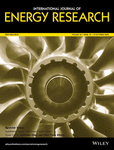A new packed-sphere model for geological materials thermal conductivity prediction at moderate porosity range for geothermal utilization
Funding information: Key Scientific Research Innovation Team Project of Shaanxi Province, Grant/Award Number: 2016KCT-16; Key Laboratory of Coal Resources Exploration and Comprehensive Utilization, Ministry of Land and Resources, China, Grant/Award Number: KF2019-14; Fundamental Research Funds for the Central Universities, Grant/Award Number: xzy022019019
Summary
Thermal conductivity of the geological material plays a critical role in the utilization of the geothermal energy, especially for the performance prediction of the buried heat exchanger. In this research, a packed-sphere model was established in order to study the spatial structure of the three-phase geological material after reviewing the actual components. The cubic cell element in the model was divided into four parallel parts, and the thermal resistance of each part was obtained using the soil physical parameters. To finally acquire the thermal conductivity of the model for certain type of geological material, the calculating method was carried out and realized through coding FORTRAN program. After comparison with previous results on three groups of quartz composed geological materials, the newly proposed model in this work was shown to be successful to forecast the thermal conductivity with around 20% overall relative error except extremely low saturation degree, which indicates that the prediction results of the model can support the performance analysis of the buried heat exchanger.




